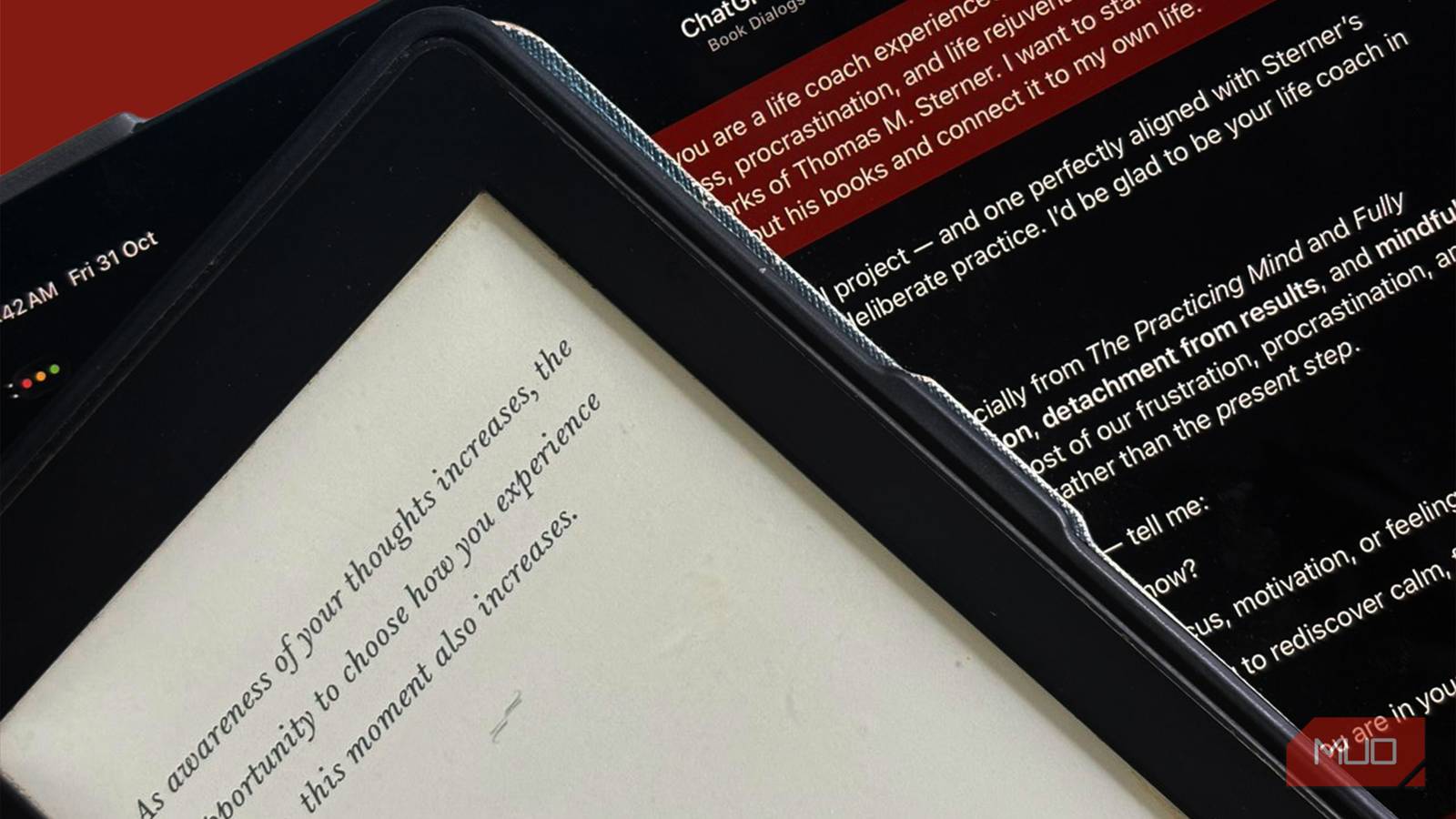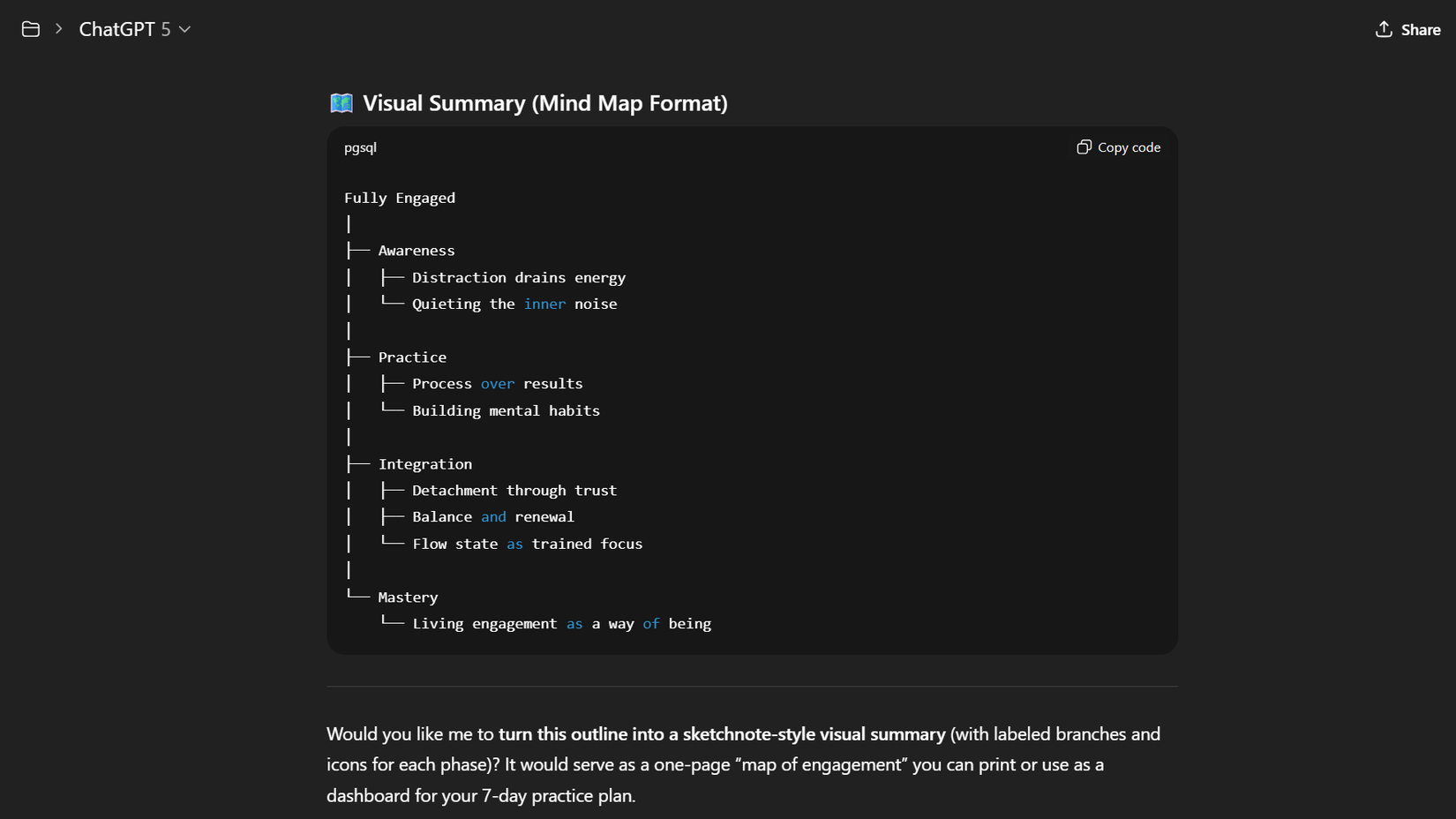The Kindle is great at collecting highlights. But when exported, they aren’t so good at helping us truly understand them. That’s where ChatGPT comes in. I have been experimenting with the Kindle + ChatGPT combo for a while. By pairing my Kindle reading with a few smart prompts, I turn every book into a one-to-one class. Here’s how I use ChatGPT, week by week, to move from passive reading to a deeper understanding.
1
Build context before reading
Prime your curiosity and map the author’s ideas.
It takes me around four weeks to finish a thick non-fiction book (as I read 2-3 books simultaneously). When I start a new nonfiction book, I don’t dive straight in. I first use ChatGPT like a compass. Book reading experts also recommend that you scan the landscape of a book before the journey into it. These prompts help me set the foundation:
Give me a concise overview of *[Book Title]*—its purpose, structure, and key argument.
This gives me the lay of the land, ensuring I understand what the author is trying to prove.
List 10 key questions this book attempts to answer, based on its table of contents.
Now, I know what to look for before reading a single page. Ten is a sufficient number (and sometimes too many) because many books seek to answer just one core question.
Help me define three personal learning goals from this book based on my interest in [topic].
Reading becomes more focused when I know what I’m trying to take away. This also tells you if the book is connected to your life.
These short exchanges give me a mental preview. Once I begin reading on my Kindle, I can instantly see how each chapter connects to those bigger questions.
2
Engage deeply while reading
Turn passive reading into a conversation.
Highlighting tricks the brain into thinking that we get what we are reading. So, I don’t stop there. After each chapter, I paste my highlights (always a bit of a pain) into ChatGPT and use prompts like these:
Summarize Chapter [X] in bullet points and highlight three actionable insights.
This transforms a wall of highlights into something I can actually use. You can also pair a bit of journaling here.
Explain this chapter as if you were teaching it to a beginner.
Let ChatGPT rehash the idea. Then, connect it to what the idea was like in your mind.
Play devil’s advocate against the author’s argument in this section.
This one’s my favorite. Going against ChatGPT’s people-pleasing attitude pushes me to think critically with a Devil’s Advocate prompt rather than accept everything the author says.
Each of these prompts turns reading into dialogue. You don’t have to use every prompt mentioned here. But questioning, paraphrasing, and testing your understanding make reading feel worthwhile.
Connect the dots and find the book’s essence.
By the third week, as I continue reading, I will have dozens of Kindle highlights. That’s when I turn ChatGPT into my research assistant. You can also change this tiny ChatGPT setting and give it a voice. I export my notes and feed them in with prompts like:
Cluster these highlights into 3–5 key themes and name each theme clearly.
This helps me see what the author is really arguing across chapters.
Create a mind map or hierarchical outline of this book’s ideas, showing how each chapter supports the main thesis.
Even a text-based outline gives me a bird’s-eye view I’d never get just by flipping through.
Turn the key insights into practical mental models I can use in daily life.
I’ve used this to reframe ideas from books like Deep Work and Atomic Habits into repeatable patterns for focus and habit formation. This synthesis phase is where it becomes easier to spot relationships between ideas, check contradictions, and revise what truly matters.
4
Apply and retain what you’ve learned
Turn understanding into real-life change.
The final week is all about moving from theory to practice. I use ChatGPT to help me transform ideas into actions and memories.
Turn the three main lessons from this book into a 7-day action plan.
The book’s lessons won’t embed if you cannot set up immediate action steps. This is where I start working on my implementation intentions.
Write a one-page summary of *[Book Title]* as if explaining it to a friend.
This tests how deeply both ChatGPT and I understand the book. If my thoughts match, then I have managed to retain most of the lessons in the book.
Design a 4-week review schedule to revisit the key concepts I’ve learned.
ChatGPT helps me create spaced repetition cycles to make sure the lessons stick.
This might look like reading a book at a sloth’s pace. But by the end of this phase, I have a complete understanding cycle: from previewing the author’s purpose to internalizing the lessons through real action. As a self-help junkie, I also turn to ChatGPT and create workbooks from books I read.
AI becomes a reading partner, not a shortcut.
Kindle helps me capture information, but ChatGPT helps me transform it. In the past, I’d finish books with hundreds of highlights and little recollection. Now, I finish with concise insights, custom study guides, and a set of personal experiments. I retain a lot more because I now actively engage with the material.
This workflow also scales well. Whether I’m reading psychology, history, or personal development, these prompts adapt to every subject. And they help me follow the rules of deep study which follows the natural progression of context, comprehension, synthesis, and application.













